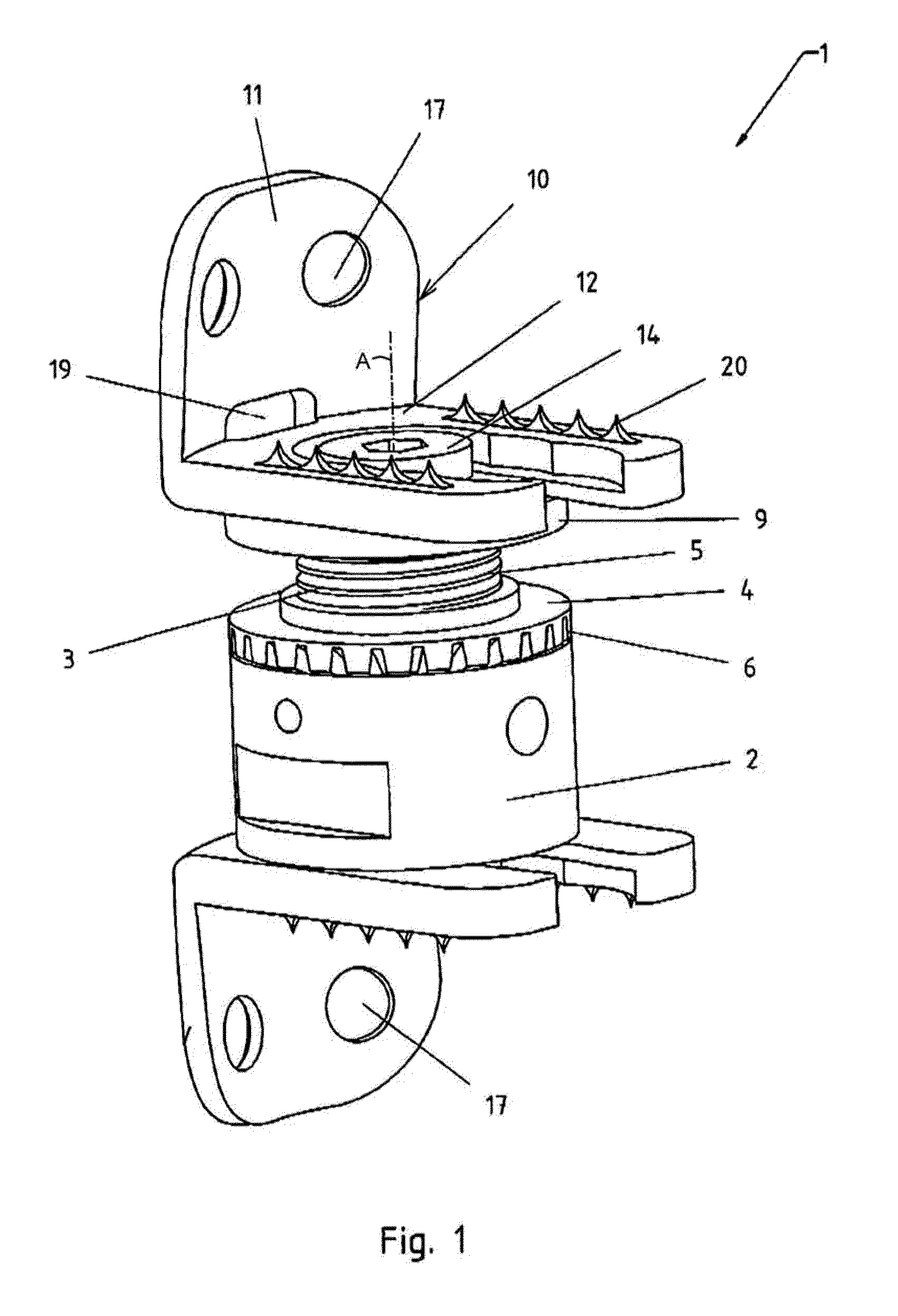Implant for use between spiral vertebrae
a technology for implants and spiral vertebrae, which is applied in the direction of muscles, ligaments, medical science, etc., can solve the problems of inability to adjust to the individual conditions of patients, limitation of increasingly used minimal invasive surgery, etc., and achieve the effect of minimal invasive surgery
- Summary
- Abstract
- Description
- Claims
- Application Information
AI Technical Summary
Benefits of technology
Problems solved by technology
Method used
Image
Examples
Embodiment Construction
[0023]FIG. 1 shows an implant 1 for use between vertebrae 8 of the spine as placeholders for vertebrae or vertebral parts removed from the spine. This implant 1 consists of a first implant part 2 and a second implant part 3 that can be moved relative to each other in the direction of their coaxial longitudinal axes for changing the length of the implant 1. This adjustability is achieved in that the first implant part 2 and the second implant part 3 are formed as tubular sleeves, the first implant part 2 surrounding the second implant part 3 and having a rotatable threaded ring 4 carried on the first implant part 2 and having an annular screwthread on its inner edge by means of which it engages into a screwthread 5 of the second implant part 3. The threaded ring 4 is equipped with teeth 6, particularly pinion teeth, on its is outer surface such that the change of length can be achieved for distraction of the vertebrae 8 by rotation of the threaded ring 4 by means of a surgical instru...
PUM
 Login to View More
Login to View More Abstract
Description
Claims
Application Information
 Login to View More
Login to View More - R&D
- Intellectual Property
- Life Sciences
- Materials
- Tech Scout
- Unparalleled Data Quality
- Higher Quality Content
- 60% Fewer Hallucinations
Browse by: Latest US Patents, China's latest patents, Technical Efficacy Thesaurus, Application Domain, Technology Topic, Popular Technical Reports.
© 2025 PatSnap. All rights reserved.Legal|Privacy policy|Modern Slavery Act Transparency Statement|Sitemap|About US| Contact US: help@patsnap.com



